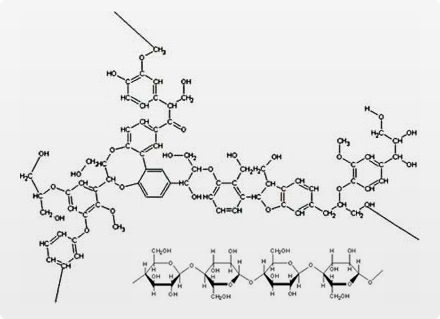What is Cellulosic Ethanol?
Cellulosic ethanol is a biofuel produced from grasses, wood and the non-edible parts of plants.
Most of the energy stored by plant and food products is in their actual structure -- the lignocellulose and it is this structure that is used to make the biofuel called Cellulosic Ethanol. Production of ethanol from lignocellulose has the advantage of abundant and diverse raw material compared to sources like corn and cane sugars, but requires a greater amount of processing to make the sugar monomers available to the microorganisms that are typically used to produce ethanol by fermentation.
FAQs About Cellulosic Ethanol
What is some biomass used to create Cellulosic Ethanol?
Japtropa, corn stover, switchgrass, miscanthus, woodchips and the byproducts of agribusiness are some of the more popular cellulosic materials for ethanol production.
What is Lignocellulose?
Lignocellulose is composed mainly of cellulose, hemicellulose and lignin. It is that inedible part of the plant that is considered the “fiber”.
What is the chemical structure of Ligocellulose?
Comprised of Cellulose and Hemicellulose:
- Cellulose -- glucose, a type of six-carbon (C6) sugar, common is foods like cornstarch and can be fermented to ethanol using conventional yeasts.
- Hemicellulose -- mainly non-glucose sugars-five-carbon (C5) sugars.

How is Cellulosic Ethanol different from Ethanol?
Both are the same end-product however Cellulosic Ethanol is made from non-digestible biomass like wood.
Why not just use corn to make Ethanol?
Corn is the current, most well established source of Ethanol. However, using it on a global scale raises the price of food products because it competes with humans and animals as a fuel source. The more that corn and sugar are made into Ethanol, the less food and land that is available for edible corn products. In addition, a highly profitable Ethanol industry incentivizes non-corn growers to convert their land into corn production, reducing the availability of food stuff for humans and animals. Experts are generally agreed that corn-based ethanol production cannot exceed 15BGY without major impacts on food markets, and Congress set a ceiling of 15BGY on corn ethanol production in the recently-expanded RFS.
Cellulosic ethanol can be made from in-edible food, bio-waste and various weeds – an ideal solution to sustainably creating Ethanol.
Why is Cellulosic Ethanol more popular?
It is difficult to produce because before metabolizing the sugars in cellulose, the biomass needs to be broken down so that it can be appropriately processed. Electregy is developing revolutionary technology for the breakdown of select biomasses.
How big is the Ethanol market?
As of January 1, 2008, there were 139 ethanol plants in the United States with a combined production capacity of over 7.8 billion gallons of ethanol per year (BGY). An additional 61 plants and seven expansions under construction were expected to add more than 5.5BGY of new capacity. While the nation produced less than one billion gallons of ethanol annually before 1991, by 2007 production had reached 6.5BGY –representing an increase of more than 32% from 2006 and more than 300% since 2000.


